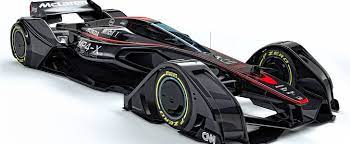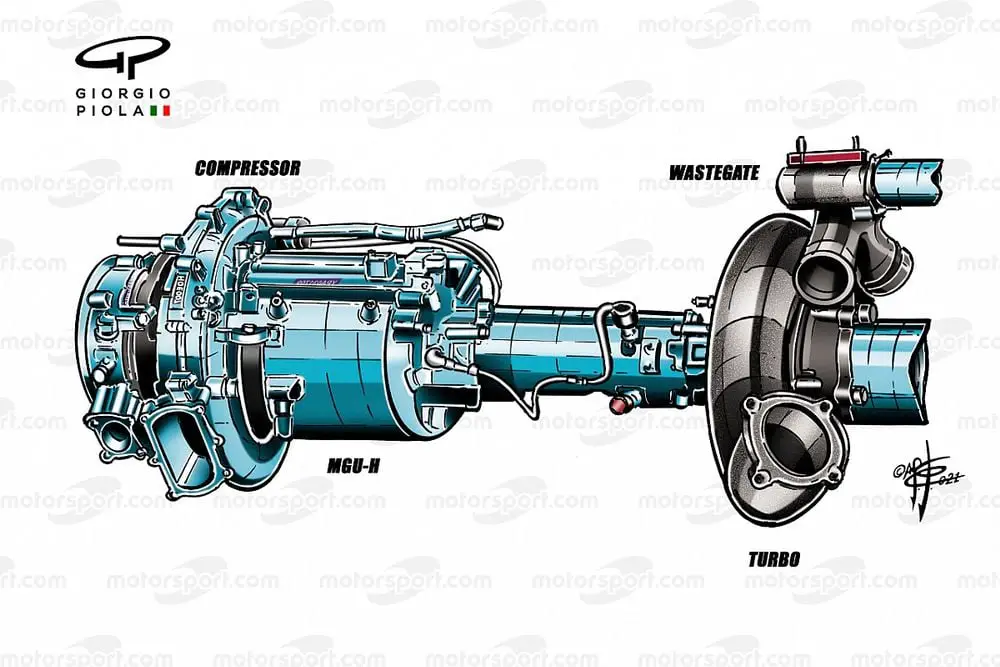The head of FIA’s single seater “technical matters” Nikolas Tombazis has laid his thoughts in the expected 2026 F1 Engines and F1 Car. These new rules will be part of a complete overhaul of the F1 technology with the intent of making the port more earth friendly.”
The guiding principles to make the 2026 F1 Car Lighter with smaller dimensions compared to the current generation F1 racing cars. These specifications will support the goal of using more renewable energy sources with a greater reliance in electric power.
The FIA published the latest version of the proposed 2026 formula 1 power unit technical regulations on 16th August 2022. These cover the engine and peripheral designs, and, in due course will be followed by the rules relating to the new cars chassis and body design.
What Are The 2026 F1 Cars Going To Be Like?
Nikolas Tombazis is proposing that the new chassis regulations will be published in April 2023. The main targets will be as follows.
It is a natural trend in any motor car design iterations that future models suffer from mass and weight “creep” as engineers try to build more features into future car models.
This is true of F1, where cars struggle to stay under the weight limits, and as a result the minimum regulated weights are increased from year to year.
This Is Seen In The Following List
| Years | Car weight lbs. | Car weight KG |
|---|---|---|
| 1950s | 705-1,543 | 320-700 |
| 1960s | 992-1,168 | 450-530 |
| 1970s | 1,168-1,268 | 530-575 |
| 1980s | 1,190.5-1,290 | 540-585 |
| 1990s | 1,102-1,323 | 500-600 |
| 2000s | 1,323-1,334 | 600-605 |
| 2010 | 1,367 | 620 |
| 2011 | 1,411 | 640 |
| 2012 | 1,411 | 640 |
| 2013 | 1,415 | 642 |
| 2014 | 1,521 | 690 |
| 2015 | 1,548 | 702 |
| 2016 | 1,548 | 702 |
| 2017 | 1,605 | 728 |
| 2018 | 1,616 | 733 |
| 2019 | 1,631 | 740 |
| 2020 | 1,645 | 746 |
| 2021 | 1,658 | 752 |
| 2022 | 1,759 | 798 |
| 2023 | 1,754 | 796 |
The Cars Will Become Smaller

Tombazis has stated that “progress will be made” in this regard, and the reductions in the cars dimensions will be a key driver of the lower weight.

Nikolas Tombazis was being recorded for an episode of The Race F1 Tech Podcast (28th December 2022) and was insistent that it will be possible to deliver on these objectives
He estimates that the reduction in the size of the cars will reduce the overall car weight by up to 35kg.
It is realistic to make them a bit lighter
Tombazis said that the majority of the weight gains have come from the new engine architecture which includes electrical power units , batteries and turbo chargers
But it is necessary to keep Formula 1 relevant to the directions of society. While a petrol head would like a V10 and end of story, we know we have to go in the direction we’ve gone. So that counts for about half of the weight increase.Nikolas Tombazis
Tombazis credited some of the weight games to the following systems.
- Approximately 50kg is added for safety features which include the halos, much stronger chassis, more comprehensive driver protection.
- 15-20kg sue t increasingly complex systems in the current F1 cars. 30-35kg
- Cars and tires have grown in size which has added approximately 35 kg
And we believe in the car dimensions there lies an opportunity. We would want 2026 cars to be quite a lot shorter and probably maybe a bit narrower as well and all of that is going to contain the weight increase.”Nikolas Tombazis
The Engines Are Becoming Greener

The new engine will have higher power electric engines which will use larger batteries. This will compromise some of the weight gains achieved by a smaller car engine
The net affect will be a lighter car, although the weight won’t be massively reduced.
Between 1990 and 2022 the weight of F1 cars has risen from 500 kg to 798 kg which is an increase of 60%.

With the new 2022 regulations the original minimum weight was 790kg. The teams were unable to meet this and so the minimum weight was revised to 798kg.
The 2023 reduction (796kg) is an attempt to get the weight back to the levels targeted in 2022.
The width of the current generation F1 cars is 2000mm which increased from the 2017 car (1800m,) The car has also grown in length to 3.6 meters .
The additional weight has impacted performance and handling, and it is hope that the new cars will add some of the older cars levels of handling.
The drivers Are Not Happy With The Weight Gains
The F1 drivers association has become more strident in its criticism of et increasing weight and is strongly pushing back against any future weight increases.
The new car will be good news for the members of the Grand Prix Drivers’ Association. This has led to increasingly vocal criticisms from drivers who have raised concerns about the weight of cars.

Tombazis has said that said that the 2026 F1 Car won’t be going back to the days when they were 600kg or less. But if the hope to reduce the dimensions of the cars works, then the 30-35kg Tombazis talks about could at least roll back some of the creeping gains of the past 15 years.
References
New 2026 regulations – Link


[…] 2026 F1 Engines […]
[…] 2026 F1 Engines […]
Your article helped me a lot, is there any more related content? Thanks!
Reading your article helped me a lot and I agree with you. But I still have some doubts, can you clarify for me? I’ll keep an eye out for your answers.
Reading your article helped me a lot and I agree with you. But I still have some doubts, can you clarify for me? I’ll keep an eye out for your answers.
I have read your article carefully and I agree with you very much. So, do you allow me to do this? I want to share your article link to my website: gate.io
I have read your article carefully and I agree with you very much. So, do you allow me to do this? I want to share your article link to my website: Log in
I’m worried the Merc will only get back into contention by 2026
How do you think Audi’s new engine will fair in F1. Do you think they have the technical team in place to create a competitive engine? How do you think the will compare with say Red Bull who have not designed engines before now, but have significant F1 experience?
I’ve just started reading your page, and I must be honest; I’m no petrolhead, and F1 kinda leaves me cold – too clinical, too controlled, somehow – but your articles have a solid balance of copy and illustration, and I might actually grow to like this sport! No promises, mind…
I’d appreciate an article on basic tactics, if you have time one day…for someone like myself, those cars pitting all over there place leave me kinda confused, and I’m sure there’s far more to this than meets the optical nerve. 😉
Stay loose, man!
With pleasure – come back in a week and it will be there